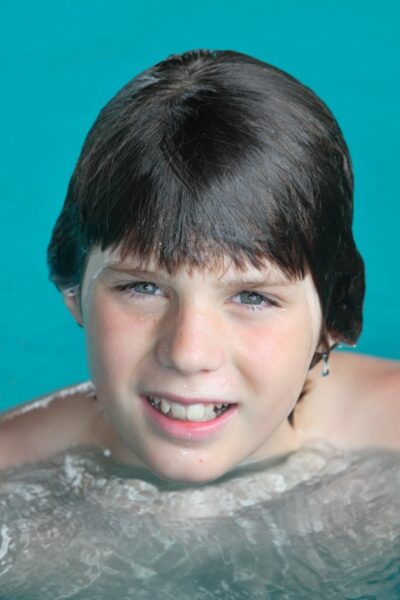Here we have a photoset of a boy named Robbie who swims a lot. Enjoy all his 117 photos.



Please ignore the rest of this text.
Having sore shoulders is inevitable over the course of our swimming careers.
It’s bad enough that they are tired and sore after a tough workout, but it’s even worse when sleeping improperly on them at night ends up causing even more pain.
I cannot count how many times I woke myself up at night from a streaking pain in my shoulder, flashing all the way down to my elbow because I was splashed across my bed on my front with my bad shoulder wrapped up under my head.
Whether you go full-blown fetal, semi-prone while giving sweet cuddles to a pillow, or in any other variation of side sleeping, the default setting for most of us is on the side.
The problem for swimmers (and their sore shoulders) is what happens when they place their arm above their head, or roll their shoulders forward. Placing your shoulder out of alignment tends to exacerbate the pain, causing you to wake up in the middle of the night with your shoulder on fire.
The answer?
Lay on your back while you sleep to take the pressure off your shoulder, and to put your neck and shoulders in alignment.
To further place your arms and shoulders back into their socket—where they are supposed to be—place your hand across your chest. If your shoulders still aren’t rolling back far enough place a pillow under your elbow in order to elevate the hand a little bit.
You’ll find this position is especially helpful if you are presently experiencing shoulder pain.
What are your scaps? And why are they important? And more importantly, why is it so fun to say “scaps”?
During my day they were neglected in favor of more rotator cuff work. Over the past decade or so research has begun to show just how critical a role they play, with swimmers with less than awesome scaps generally suffering from added stress to the anterior shoulder capsule, a rise in the likelihood of rotator cuff compression, and decreased neuromuscular performance in the shoulder.
Okay, so those were some sciencey words.
To break it down, the scaps provide a solid base from which your shoulder joint can exert additional force and power.
Stable, strong scaps = more power and speed in the water. (And less likelihood of injury.)
An easy way to develop scap stability is to throw a basic standing row into your warm-routine. You can use an elastic band, cable machine, or my favorite, TRX.
Keep your elbows tight, feel the squeeze in your scaps at the end of each rep, and perform the movement with control.
Having great posture outside of the water is fantastic, and will serve you well.
But if you forgo any thought of maintaining solid posture in the water, than you are still leaving yourself open to taking on shoulder injuries in the future.
Remember that swimming is a resistance exercise, just like weight lifting or any other kind of resistance training, and that achieving proper technique and form should be your over-riding objective before adding any kind of load (intensity and/or volume) in the water.
On top of the risk that you are putting your shoulders at, swimming with stinky posture means you are losing out on substantial power in the water.
Don’t believe me?
For a moment round your shoulders forward, and try to simulate your stroke. Are you getting a good range of motion? Nope. Are you using your core, back and arms to the best of your capability? Certainly not.
In other words, having excellent technique and mechanics in the water is absolutely critical to both swimming fast and staying clear of nagging shoulder injuries.
Dr. DeRoche:
“Poor swimming mechanics is what I see most commonly creating shoulder ‘issues’ in any swimmer.
The primary factor which contributes to impingement syndromes that I see in my office is a thumb-first hand entry in the crawl/freestyle stroke.
What this hand entry creates is internal rotation of the arm/hand and ‘closes’ off/pinches the soft tissues on the inside (medial) arm and disallows for adequate reach and therefore a less than optimal catch.”
Russell Mark, high-performance consultant to USA Swimming, agrees (emphasis mine):
“Repetition alone isn’t enough to injure your shoulder. Repetition of bad technique is. It’s so easy – and incorrect – to swing your arm behind your body when you swim.
In freestyle, a wide hand recovery is more natural and easier on your shoulder than a recovery with your hand close to your body. Swing your hand and arm around to the side.
During the pull phase, make sure your hand doesn’t scull wide at the same time your body is rotated.
Brent Hayden, Olympic bronze medalist in the 100m freestyle in 2012, and winner of the 100m freestyle at the 2007 FINA World Championships had this to add for all you freestylers out there:
“…eliminate zipper drill and over-emphasis of high elbow freestyle, which often involves shrugging (therefore impinging the shoulder) the arm through the recovery. Instead aim to come around naturally like an arm swing with a soft elbow.”



